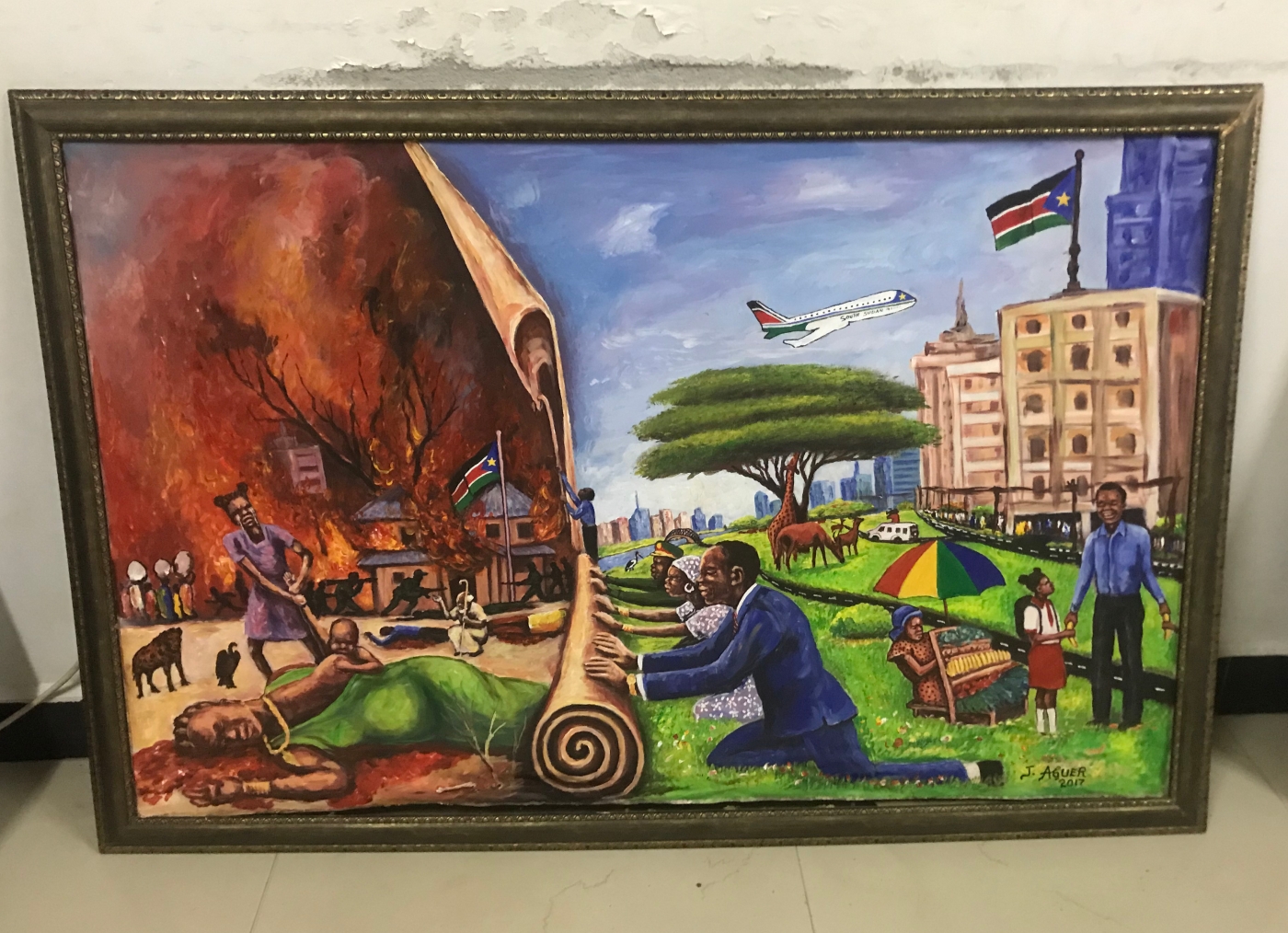by PETER OBORNE & JAN-PETER WESTAD

The long rivalry between Salva Kiir and Riek Machar exploded into civil war with South Sudan’s independence in 2011. Now a deal could be in sight
South Sudanese artist James Aguer Garang has invited us into his sparsely furnished studio. Propped against the wall is his most famous painting.
On the right side of the canvas is the nation envisaged at the time of independence in July 2011. Blue sky. Cattle grazing in lush grass. A father and daughter walking hand in hand.
The left side of the canvas represents the reality of war: rape, destruction and death. A child tries to suckle milk from its dead mother’s breast. Villagers flee from their burning huts as soldiers advance.
“This is the story of our country,” says Garang, a gentle and serious man in his 40s. With a pen in his shirt pocket and wearing a dark suit, he dresses more like an accountant than an artist.
The picture is personal for him. Aged nine, Garang was one of a force of 20,000 children enlisted by the Sudan People’s Liberation Army to fight in the second Sudanese War, which lasted from 1983 to 2005.
Told by soldiers he would be going to school, instead he was taught to use a gun. He saw combat in one of the most bloodthirsty conflicts of modern times in which more than two million lives – approaching one quarter of the South Sudanese population – are thought to have been lost.
Garang has a scar above his right eyebrow. “We were running from the enemy,” he explains. “We had to cross a river. They were shooting at us so I dived down deep to escape the bullets and hit my head on a rock.”
“Every day when I look in the mirror, I am reminded of that time.”
After five years Garang deserted, making a five-month journey on foot through the Ethiopian bush before reaching a refugee camp in Kenya.
Middle East Eye for more
